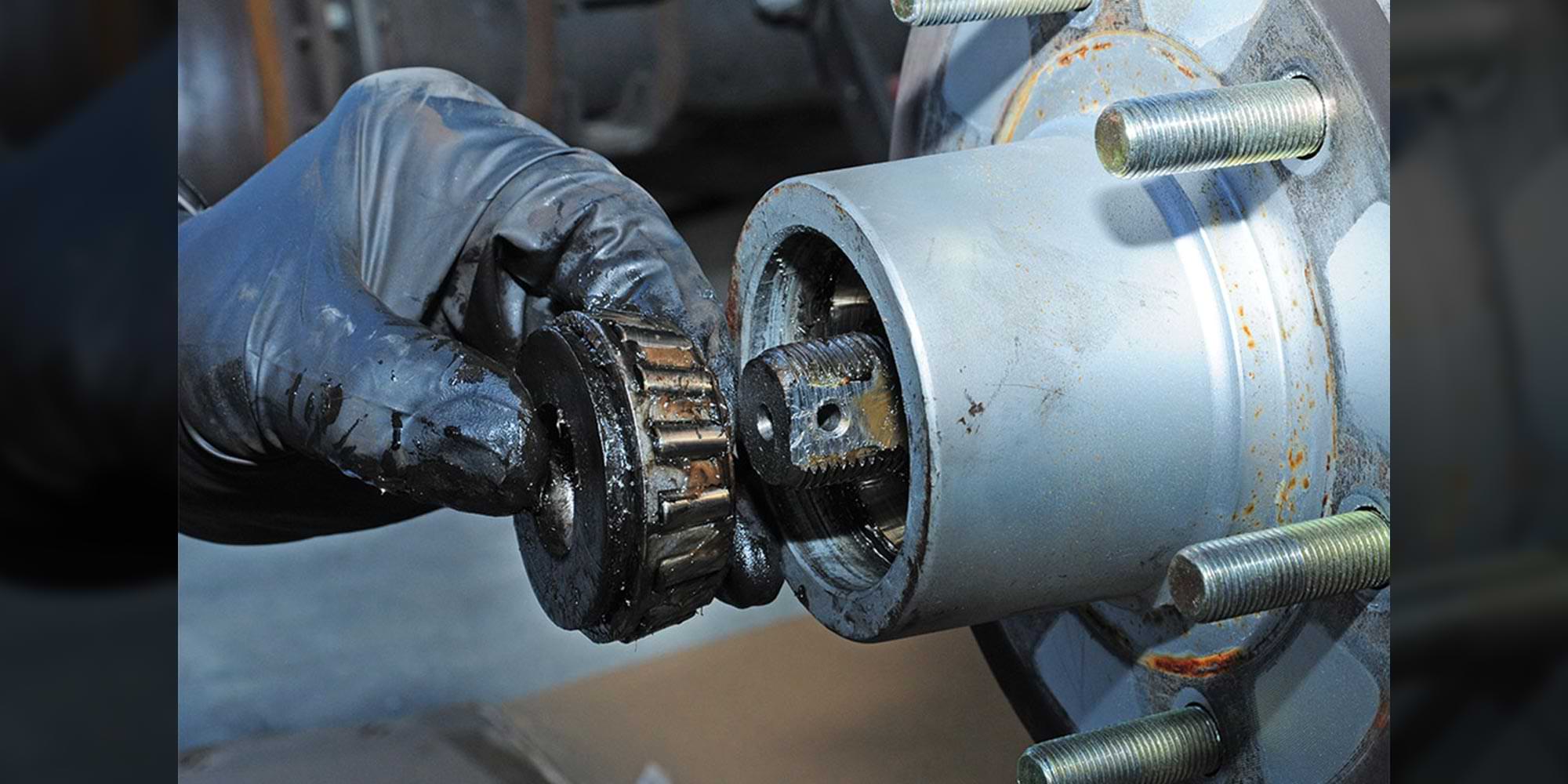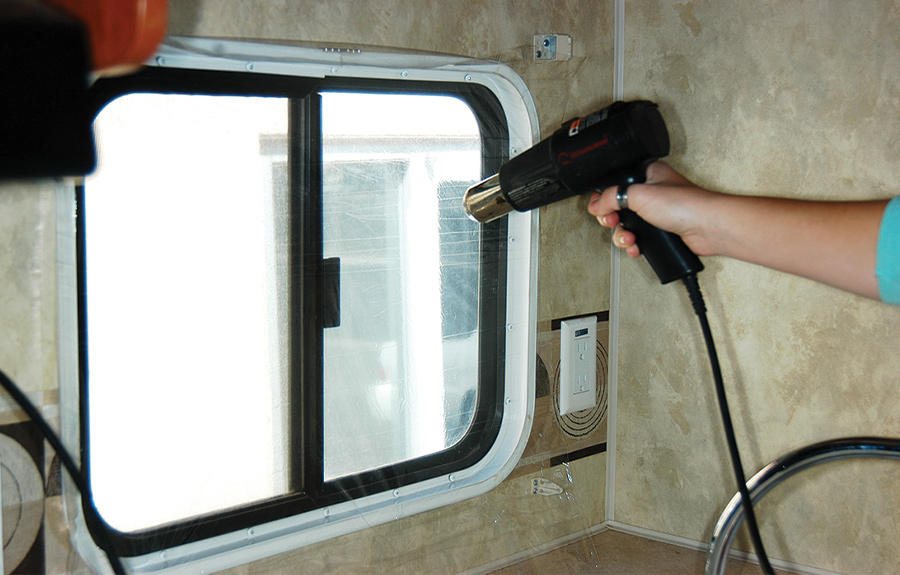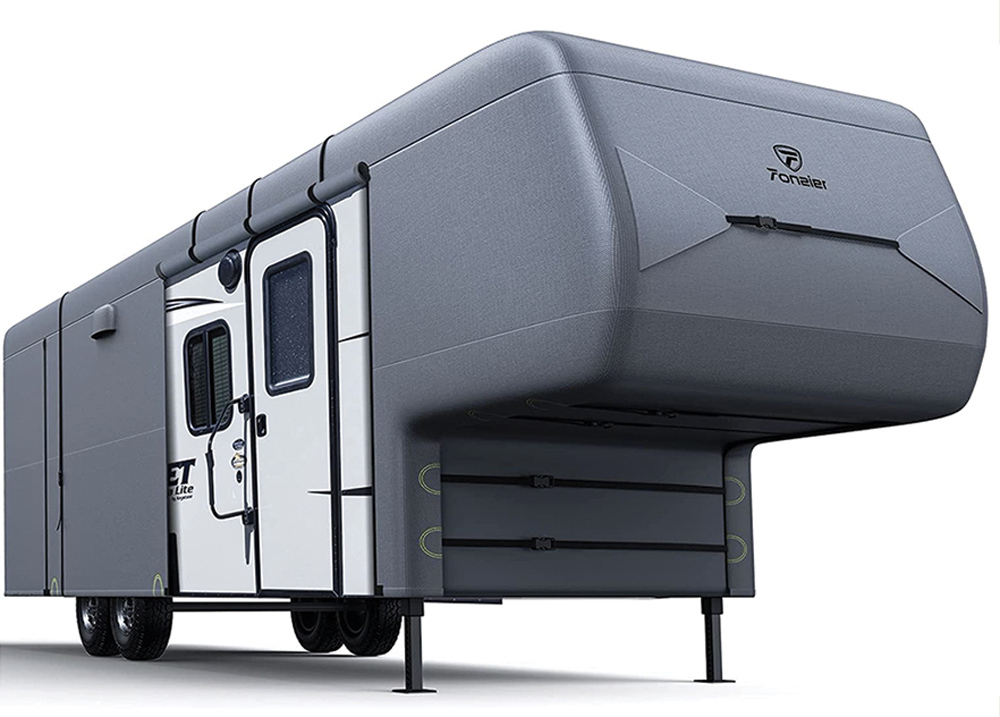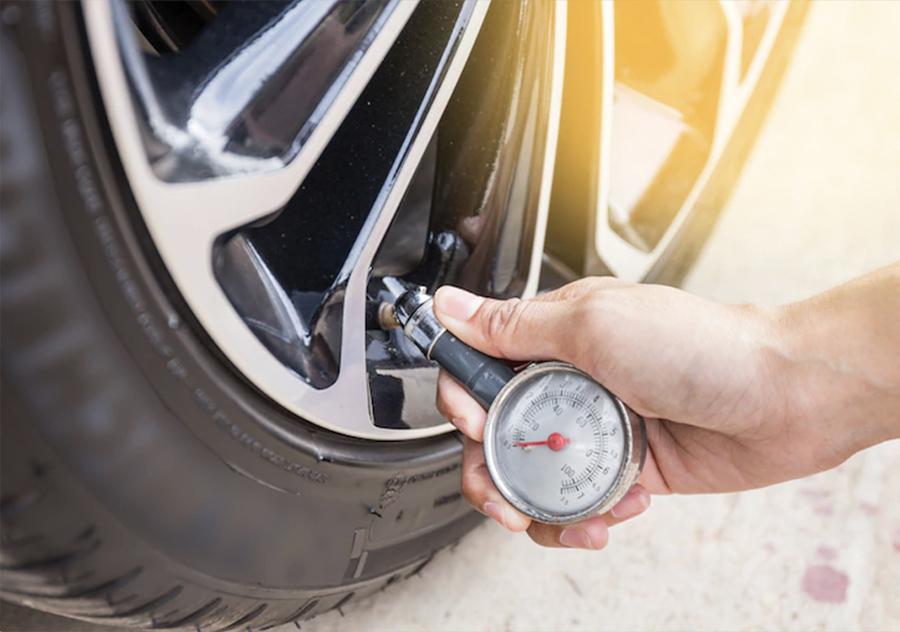Technically Speaking – Q&A: January 2023

Check Your Bearings
I’ve been told that the wheel bearing in my trailer axles should be checked annually or after 12,000 miles of travel. My trailer has Nev-R-Lube bearings, which are supposed to be sealed and not needing inspections. What would you do?
— Maryann Fisher
The Nev-R-Lube bearings from Dexter are sealed and do not need to be repacked with grease. Still, you should pull the wheels and inspect the spindles/bearings for adverse wear every year or 12,000 miles, as stated by Dexter. You’ll be looking for endplay, adverse wear and possible leaking grease. Although these bearings are sealed, they are not infallible and can leak. If that happens, you’ll need to replace them. Annual inspections also allow you to check for adverse brake wear and any wiring problems.
If you have standard bearings, it’s imperative that they are inspected and repacked yearly (or 12,000 miles, whichever comes first). Unfortunately, most bearings are made overseas and tend to wear quickly or even fail. You don’t want to be stuck on the road with a bearing failure, which can result in expensive repairs and collateral damage. Make it a habit to pull the bearings yearly and check for worn splines, which can become loose and even sloppy. When repacking, use high-quality, disc brake grease and always replace the grease seals.
A few years back, I was doing a routine bearing service for a friend and discovered that one of the disc brake pads had dislodged from the backing plate and destroyed the rotor. He didn’t even know there was a problem with the brakes. Annual inspections will help ensure safe and trouble-free trips and, quite frankly, are not that difficult. Even if you don’t have the proper tools (like a bearing packer and a bearing race and seal driver), it might be possible to borrow them from a local auto parts stores that offer this service.
Sopping Wet Windows

— Trina Lawsen
Trina, I know what you’re going through since at one time I owned a fifth wheel with single-pane windows, which I’m assuming is how your rig is equipped. Single-pane windows are the most susceptible to condensation, which is why full timers prefer dual-pane windows to go along with a three- or four-season insulation package.
There are a few things to try. You’ll likely have good success using a 120-volt AC dehumidifier, but you will need to get one large enough to handle the amount of square feet in your trailer — and it will need to run 24 hours. Just keep an eye on the collection tray and empty it before it’s full. You can also try to treat the inside of the windows with Rain-X, which should control some of the moisture. Unfortunately, you still may have to use towels at the bottom of the windows to stop the condensation from running down the walls.
Dri-Z-Air is a popular product that uses special moisture-absorbing crystals to remove water; it requires no power, so it’s practical when in a primitive setting. You can find Dri-Z-Air devices and refills at most RV supply stores and online; you will probably need two or three, placed around the inside of the RV. There are also other options, like DampRid moisture absorption buckets, which are available in most home improvement stores and Walmart. This type of desiccant collects condensation effectively but you’ll likely need several buckets throughout the RV, which is not very practical.
Another option is to create a vapor barrier between the window and inside of the RV. Storm windows are the best for this application, but not very easy to retrofit to your window frames. Rather, you can use Frost King plastic film to cover the windows and probably eliminate up to 90% of the condensation. You’ll have to remove the film in the summertime and re-apply at the onset of winter. Personally, I found that the dehumidifier did the best job.
To Slide or Not to Slide — and Cover

Adding another layer of insulation to windows results in a vapor barrier, which combats condensation. Frost King is a popular product and can be installed by shrinking the clear plastic film to the window frame using a hair dryer.
— Robert Peters
Personally, I would retract the slideout rooms anytime the RV is stored. Melting snow that has piled up on the roof of an open slide has the propensity to work its way into the interior through the seals, especially if the rig is not level while in storage and the water puddles toward the sidewall.
There are some challenges to covering a fifth wheel in the winter, but you can mitigate many of the problems with the purchase of a good cover that fits properly. The best covers are made of Sunbrella material, which is a strong acrylic that will last a long time. Before installing the cover, make sure any sharp edges/corners are protected from the cover material. For example, most experienced owners will cover the air-conditioner shrouds, roof vents and other accessories with moving blankets and hold them in place with sandbags; just make sure only to use cotton blankets (no synthetic materials, which can melt in hot weather). Many owners also cover the rain gutters with old tennis balls. Just make sure that the cover is tied down properly; left to sail in the wind, the edges can fray and lead to rips in the material. Make it a point to check on the RV on a regular basis.
The better covers are breathable, so there is little risk of mildew. Also, don’t even think about covering the RV with a plastic tarp — that’s just a disaster waiting to happen.
Leveling Jacks Fail to Retract
Bill, recently after hooking up to my fifth wheel I was able to retract the front jacks but the other four were unresponsive both automatically and manually. I contacted Lippert after I discovered it was the manufacturer of the leveling jacks, but all it did was email me a troubleshooting manual. I finally managed to get a technician out to my site who rewired the system so he could retract the other jacks using the switch for those in the front. However, even subsequent visits to my local dealership service department have not resulted in a resolution to my problem.
— Rick Anders
Rick, normally these jacks are reliable — but as you found out, sometimes things go haywire. I’m not sure if I have enough information to really diagnose this problem, but I would start with a system reset, which can be accomplished via the control panel. It’s also probable that there’s a glitch in the control panel or circuit board. It’s not likely that the problem is in the jacks since they function manually after the technician rewired the system.
How High Can You Go?

Photo courtesy Bridgestone Tire
I read your article about the gentleman with tires blowing out, which leads me to my potential problem. I have a 2020 Class C motorhome with a tire pressure monitoring system. I’ve noticed that the temperature goes up from 90 to 95 degrees F at startup and after several miles the temperature goes up to 105. Tire pressure also goes from 80 to 90 or 95 psi. Is this all normal? All of the tires are reaching close to the same temperatures and pressures.
— Joseph Darmofalski
Joseph, the rising temperatures and pressures are normal when tires get rolling down the highway. Tire manufacturers consider these increases when specifying pressure limits; that’s why pressure is always checked when the tires are cold. If you were to check the pressure at different places along the route after traveling and let air out because it looks like the tires are overinflated, you’ll end up underinflating the tires and risking failure.
For example, tires that are normally inflated to 80 psi cold can reach more than 90 psi when hot; temperatures can easily hover around 100 degrees and should not be considered a problem until they reach around 135 degrees. Good job keeping an eye on this.

Bill started his 50-year career in the RV industry when he went to work for an Airstream dealership. After the gas shortages in the 1970s, Bill decided to start his own business and opened up Bill’s RV Service in Ventura, California. After several years in business, he met Bob Livingston, and together they worked on hundreds of technical editorial projects at his shop while becoming great friends. Bill eventually joined Bob on the TV show “RVtoday,” filming a number of hands-on projects. After retiring, Bill headed out full-time in his fifth wheel and toured 39 states while writing technical articles for Trailer Life and MotorHome magazines. He now is Technical Director for RV Enthusiast.
Already a Subscriber? Click here for Access to the Full Issues.

